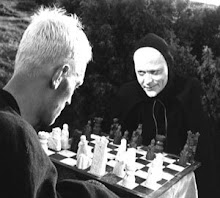Dr. Jeff Glassman on AGW guestimates
(Glassman, neither conservative nor a creationist nor a member of the Gore church, takes apart the IPCC/AGW guesswork, manipulations, and CO2 hype. Perhaps the Goreans might peruse recent US weather patterns-- with record freezing temperatures in the Midwest over the last few weeks: maybe, in some PC postmodernist fashion, poor people freezing to death is actually a sign of AGW too )
(IPCC claim: "The present atmospheric CO2 concentration has not been exceeded during the past 420,000 years, and likely not during the past 20 million years.")
Glassman: """"""Keeling's Mauna Loa record now covers 50 years, and during that entire time it exceeded 300 ppm, the top of the grey bar range. What are the chances of detecting such a 50 year span during the last 420,000 years by one of the 363 ice core samples? It is 50 divided by the mean sample interval, 1140 years, which is 4.4%. If the claim is extended to cover the 650,000 year period covered by the extended Vostok record comprising 685 samples, the chances are 5.3%. Thus the IPCC claim is true with a confidence level of about 5%. Usually scientific claims are expressed in confidence levels better to much better than, and not much worse than, a coin toss, such as 80%, 90%, 95%, or better. The IPCC could be 95% confident that an interval such as the present was undetectable among the Vostok ice core reductions.
[In the Fourth Assessment Report, the Consensus on Climate introduces qualitative expressions to stand for quantified "likelihood of the occurrence" of events. Very unlikely is less than 10%, "extremely unlikely" is less than 5%, and "exceptionally unlikely" scores as less than 1%. 4AR, Technical Summary, p. 121. In the IPCC discussions on carbon dioxide and its immediate effects in the GCMs, the Consensus uses this scoring to impart a quantitative and objective score to what is actually no more than the writers' subjective opinions. Science precludes such subjectivity.""""
[However, with regard to the unprecedented nature of the Mauna Loa record, the confidence level is objective, calculable by the ratio of the record length to the sample interval. The IPCC could have said that the chances of having detected an interval like the modern record in the Vostok record was extremely unlikely. When the Consensus had a chance to be objective, it declined. Proclaiming an impending catastrophe trumped objectivity. """"""
Thursday, December 27, 2007
Subscribe to:
Post Comments (Atom)

Custom Search
Blog Archive
-
▼
2007
(154)
-
▼
December
(14)
- American Philosopher, Vince Lombardi"Academy, n. (...
- Politics"A strife of interests masquerading as a c...
- McBeatnikTired of praising NASA, Al Gore, and the ...
- Dr. Jeff Glassman on AGW guestimates (Glassman, ne...
- A Bubba belches "Tolkien"."Wer mit Ungeheuern kämp...
- merdly rdnzl-muss
- A Modest Proposal: End the popular vote"Giving eve...
- Dissent: Rational, and not-so-rational.""Among peo...
- Intense, man: The Sean Penn School of RhetoricThe ...
- Mitt the Mormon waves his Flag of Phreedom. "Free...
- Bubba discovers Verification!Bubba finally makes i...
- Politics of "compassion" “The idea of equality, t...
- Russell's TeapotMost participants in the Dawkins ...
- Slang, n."The grunt of the human hog (Pignoramus i...
-
▼
December
(14)

No comments:
Post a Comment